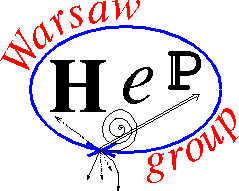SEMINARIUM FIZYKI WIELKICH ENERGII
Dnia 24 kwietnia (piątek) o godzinie 10:15, odbędzie się seminarium, na którym zostanie wygłoszony referat pt.:
PolFEL – Polish Free Electron Laser and its research capabilities
Referuje: Paweł Krawczyk (NCBJ)
Abstract:
PolFEL is a new research facility currently under construction at NCBJ at Otwock-Świerk in Poland. The facility will comprise a free electron laser powered by an entirely superconductive accelerator designed for continues wave (cw) and long pulses (lp) operation. Besides the photon beams provided to the experimental end stations, the gain of the accelerator physics and engineering capabilities are a desired benefit of this project.
PolFEL will be furnished with three undulator chains settled in the two accelerator branches. The full energy branch will provide an electron beam with energy up to 155 MeV in cw mode and up to 187 MeV in lp mode that will allow to generate the coherent light with the wavelength down to 55 nm (in the 3rd harmonics). The striving to attain VUV ranged beam in spite of limited electrons energy brings forth the need of a challenging, short period undulator design and impels to minimize an electron beam emittance. The low energy branch will provide the electrons with energies up to 80 MeV in cw. The radiation wavelength will cover two spectral ranges: IR – from 5 µm up to 50 µm and THz – covering the so called “terahertz gap” of 0.3 THz – 5 THz. Photon beamlines capable of providing the photon diagnostic setups and guiding the beams to the experimental stations will be constructed adjoined to the undulator chains. Still another experimental station will employ femtosecond x-ray pulses in the keV range generated in Compton backscattering process employing the accelerated electron beam and photon beam from auxiliary optical laser.
PolFEL is constructed by a Consortium of 8 institutions lead by NCBJ. The project received funding from the European Regional Development Fund in the framework of the Smart Growth Operational Programme, Measure 4.2: Development of modern research infrastructure of the science sector and, noticeably, a support from the Industry.
Serdecznie zapraszamy
dr hab. Katarzyna Grzelak
prof. dr hab. Jan Królikowski
prof. dr hab. Aleksander Filip Żarnecki
The meeting will take place on zoom.us platform.
Zoom meeting link: https://zoom.us/j/176261850
Zoom meeting ID: 176 261 850

